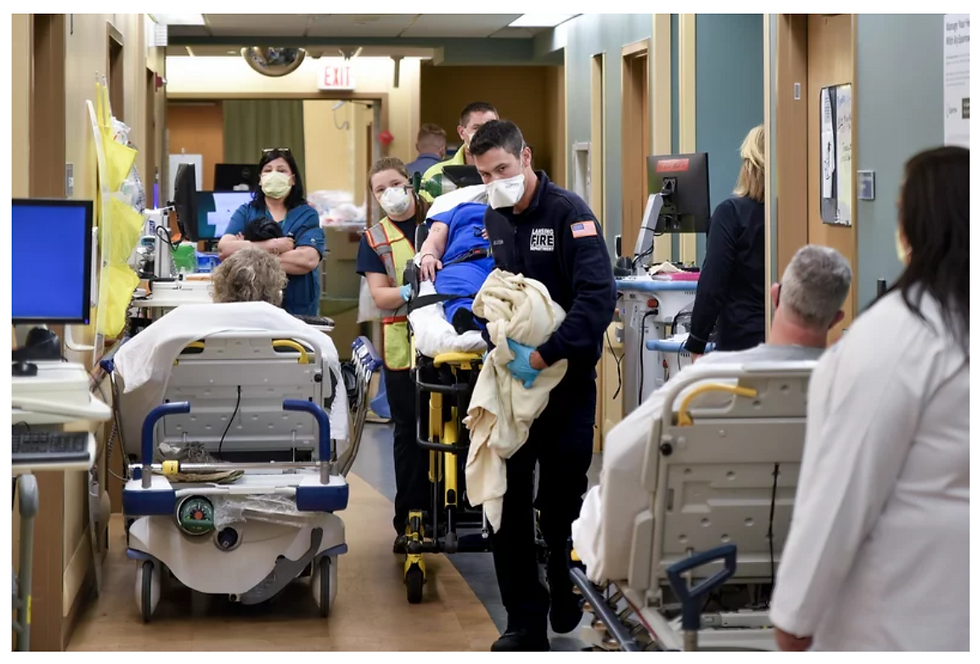Surprising Stats and Solutions for Venous Leg Ulcers
- katherinepiette
- Jun 1, 2017
- 4 min read
Updated: Mar 2, 2021
According to an article published on the website of the National Institutes of Health, Human Skin Wounds: A Major and Snowballing Threat to Public Health and the Economy, in the United States it is estimated that Venous Leg Ulcers (VLUs) cause the loss of 2 million working days per year. VLUs account for 70%–90% of ulcers found on the lower leg and the prevalence of venous ulcers in the U.S. is approximately 600,000 annually. In individuals 65 years and older, venous leg ulcers affect approximately 2% of the population in the U.S. VLUs cost approximately $9,600 to treat. The annual cost of treating venous ulcers to the US healthcare system is estimated at $2.5–3.5 billion. Up to one third of treated patients experience four or more episodes of recurrence.
Using these staggering statistics to set the stage, we know that a focus on VLUs is imperative in the overall strategy to combat chronic wounds across provider settings. According to Teresa Kelechi, a nurse researcher at the Medical University of South Carolina and known expert in the treatment of VLUs, it comes down to either spending less than $15 on supplies to treat a venous leg condition or let it go unmonitored and risk ulcers, pain, immobility and possible amputation at the cost of upwards of $40,000. Her primary focus as a nurse scientist is VLU prevention. That’s why she’s involved with two studies to help a group of patients who are in many cases underserved, and in most cases, depressed, and in great need of effective, low-cost interventions.
In 2008, Kelechi, DPN, gave up her clinical practice to pursue identifying preventive treatments. “My practice was the dearest to my heart because patients were the dearest to my heart, but I couldn’t do it,” she said of her choice to give up her clinical practice to be able to focus on research, teaching and administration. “This has allowed me to do great things, for a much greater number of people.”
Her expertise: venous disease, something that’s not a “glamorous” cause but that has a huge societal impact, she said. About 10 percent of the population has venous disease and when that’s combined with other chronic conditions, such as diabetes and obesity, it can lead to a poor quality of life.
Venous disease occurs when valves in the veins that assist with blood flow to the heart become damaged, allowing the backward flow of blood in the legs. Over time, the increased pressure can cause other valves to fail, and if left untreated, lead to leg pain, swelling, ulcers and other health problems.
Risk factors for the development of chronic venous insufficiency include history of vascular surgery, varicose veins, DVT, thrombophilia, obesity, multiple pregnancies, severe trauma to the lower leg, smoking, advanced age, calf muscle pump failure, and occupations requiring long periods of sitting or standing, such as healthcare professionals.
According to Kelechi, blood can pool in the veins, which is called stasis, damaging blood vessels and causing inflammation that leads to irritating skin conditions and throbbing pain. It’s critically important to get these patients to where they can walk and exercise their legs.
Kelechi said she is drawn to help these patients, many of whom are homebound and suffer from the negative psychological impact of chronic pain and immobility.
“A lot of these people are depressed. They have high fatigue, and some are irritable. They have low self-efficacy, meaning that they believe that anything they do won’t make a difference,” she said. “They’re thrilled to know that there’s something they can do and there’s expertise in this area, because they just gave up.”
In the home health care setting, Venous ulcer disease can affect many components of a homecare agency’s core business, such as HHCAHPS, readmission rates, clinical performance, patient outcomes, and overall financial results within the episode. Analyzing clinical data is a given; but comparing clinical data with a financial aspect is also imperative. Today, home health providers must partner with vendors who are clinical resources and experts in helping manage the most difficult of wounds, especially as length of stay is trending downward within the acute care and long term care segments.
Some questions to be answered include: Can patients be better managed to avoid wound complications and deterioration? Should supply spending be increased to reduce the number of clinician visits? Would more advanced dressings promote better healing and thus potentially avoid infection and emergent care?
Corstrata utilizes mobile technologies to create access to its board-certified wound care specialists, producing a return on investment for our customers. Additionally, Corstrata wound experts collaborate with providers to develop a wound program that includes proper assessment, recommendation of evidence based, best practice wound treatments, staff education, venous ulcer management programs, and wound formulary redesign. Corstrata provides wound image and video consults that include accurate identification of the wound type and associated staging, precise wound measurement, and recommended treatment and wound dressing.
Contact us today for Expert Wound Care. Anywhere.






Comments